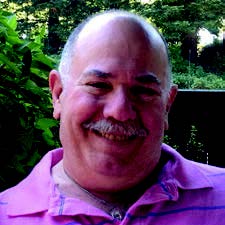 Dwight Eisenhower had been president of the United States for less than a month when Christine Jorgensen arrived at Idlywild Airport on February 12, 1953, and immediately became the most talked about individual in America—and the most discussed transgender person in history. At what later would become known as a “media frenzy,” 300 reporters, then an unprecedented number, met her plane. She answered a few questions, before saying, “I thank you all for coming, but I think it’s too much.”
Dwight Eisenhower had been president of the United States for less than a month when Christine Jorgensen arrived at Idlywild Airport on February 12, 1953, and immediately became the most talked about individual in America—and the most discussed transgender person in history. At what later would become known as a “media frenzy,” 300 reporters, then an unprecedented number, met her plane. She answered a few questions, before saying, “I thank you all for coming, but I think it’s too much.”
Her fame was extraordinary. By the end of the year, newspapers printed over a million and a half words about her, more than they printed about anyone else in the world, including the newly inaugurated American president and the newly crowned queen of England. As Jorgensen wrote many years later, “I found it a shocking commentary on the press of our times that I drove news [of hydrogen bomb tests] off the front pages of newspapers around the world.”
 All of this attention arose because in 1950, Jorgensen traveled to Denmark, where she began a series of sex reassignment surgeries. First to her parents and friends, then to anyone interested, she explained that she simply was correcting “a birth defect.” Two years later, recuperating in a Copenhagen hospital from one of the procedures, the New York Daily News got hold of a letter she had sent home some months before. One sentence seemed a sensationalist’s treasure. “I am still the same old Brud,” she wrote, using a family endearment based upon the word “brother,” “but Nature made a mistake, which I have had corrected, and I am now your daughter.”
All of this attention arose because in 1950, Jorgensen traveled to Denmark, where she began a series of sex reassignment surgeries. First to her parents and friends, then to anyone interested, she explained that she simply was correcting “a birth defect.” Two years later, recuperating in a Copenhagen hospital from one of the procedures, the New York Daily News got hold of a letter she had sent home some months before. One sentence seemed a sensationalist’s treasure. “I am still the same old Brud,” she wrote, using a family endearment based upon the word “brother,” “but Nature made a mistake, which I have had corrected, and I am now your daughter.”
On December 1, 1952, the Daily News published its story, “Ex-GI Becomes Blonde Beauty,” which took up its entire front page. The tabloid, with a circulation of more than 2 million, reported that Jorgensen had undergone what it mistakenly called the first “sex change” in history. There had been sex reassignment surgeries before, some well publicized, but this time it was different. This time it was a boy from the Bronx, home of the New York Yankees and the Bronx cheer, who was the son of a carpenter, an honorably discharged United States Army veteran, and a true blue, red-blooded American. Newspapers everywhere began running similar articles.
The coverage only intensified after Jorgensen returned to the United States on February 12, 1953. The public, which could not learn enough about her, read in the newspapers—often on the front page—about her first cocktail in America, her shoe size, her donation to a volunteer fire department, her 1953 Easter bonnet, and even her test for a driver’s license. “She, then he,” Newsday reported, had once been employed as a chauffeur. But her license had expired and so, said one wag, “had the sex of the owner.” Her romances also were news, although, given the name George William Jorgensen, Jr., when she was born on May 30, 1926, the government denied her a marriage license in 1959 because her birth certificate listed her as “male.”
Jorgensen quickly discovered that because of all the attention, it was impossible for her to follow her former career as a photographer. Taking the advice of a theatrical agent, she then created a nightclub act. “I decided if they wanted to see me, they would have to pay for it,” she said later. Although she sang and danced a little on stage, mostly she appeared as herself. Her first patrons may have come to see her for her notoriety, but she quickly won them over, attracting large audiences for more than 15 years, long after curiosity about her sex reassignment surgery had faded.
As her nightclub career was coming to a close, Jorgensen began a new calling, speaking on university campuses all over the country. Invariably she attracted a capacity audience, which she captivated from the first appearance of her shoe tip until the last bit of flounce disappeared behind the proscenium arch. Sitting center stage, elegantly gowned and jeweled, her presence, her dignity, and her ease commanded the stage and captivated attention as much as her fame.
In 1989, the year of her death—four weeks short of her 63rd birthday—Jorgensen said that her achievement was to have given the sexual revolution “a good swift kick in the pants.” That she did, and so much more. She used her celebrity for a national conversation about gender identity and the transgender community. In an era when people liked Ike and loved Lucy—before Playboy, before sex education and birth control pills—when sexuality simply was not discussed publicly, she began and continued a very open discussion of what it meant to be a man or a woman.
Not only did she advocate for transgender people during countless interviews and appearances, but she also did so for all people. Her story and her life reassured and heartened innumerable men and women who experienced the same feelings she had before her journey to Denmark. She was also was an inspiration to many who struggled with the social identities and expressions of gender presumed for them by others. She further was admired for her courage, elegance, and grace. She remains a role model, not only for transgendered people, but also for all of us who seek to become our true selves.
Bill Lipsky, Ph.D., author of “Gay and Lesbian San Francisco” (2006), is a member of the Rainbow Honor Walk board of directors.
 David Perry oversees the Rainbow Honor Walk series. He is co-founder and co-chair of the nonprofit Rainbow Honor Walk, which has created a landmark memorial in the Castro to heroes and heroines of the LGBT community. He is also the CEO and Founder of David Perry & Associates,
David Perry oversees the Rainbow Honor Walk series. He is co-founder and co-chair of the nonprofit Rainbow Honor Walk, which has created a landmark memorial in the Castro to heroes and heroines of the LGBT community. He is also the CEO and Founder of David Perry & Associates,
http://www.davidperry.com/
Recent Comments